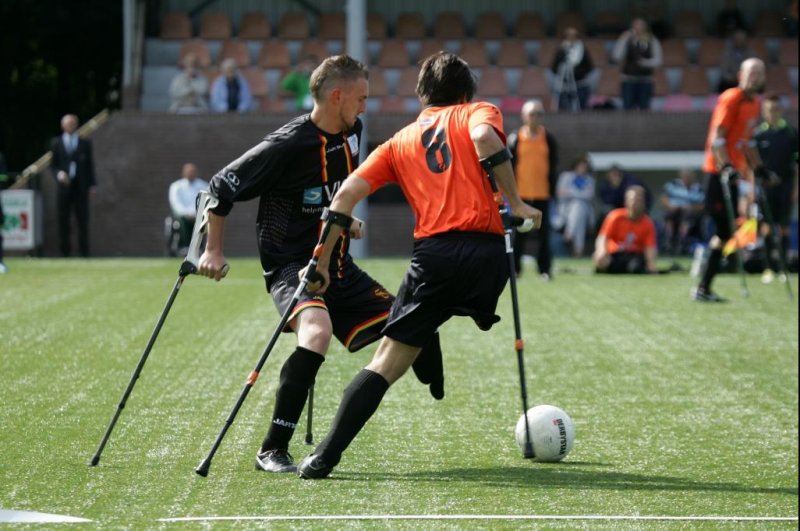The National Institutes of Health and the Department of Defense want to determine how many people in the United States are living with missing limbs. Photo by
ErikSmit/pixabay
Oct. 1 (UPI) -- The U.S. government is working to develop a database that will include the number of people in the United States living with limb losses for insight on their challenges and needs.
The National Institutes of Health and the Department of Defense expect to have the Limb Loss and Preservation Registry operational in 2020, the NIH announced on Monday.
The NIH's National Institute of Child Health and Human Development has awarded a five-year contract for up to $5 million to the Mayo Clinic to develop and launch the registry.
It will include data with the goal of improving prevention, treatment and rehabilitation efforts, according to the NIH.
"The Limb Loss and Preservation Registry addresses a significant public health knowledge gap," Dr. Alison Cernich, director of the National Center for Medical Rehabilitation Research within NIH's Eunice Kennedy Shriver National Institute of Child Health and Human Development, said in a statement. "The information housed in this database will be vital to preventing limb loss, improving amputation surgeries, refining rehabilitation approaches and guiding the development of devices for people with limb loss."
The electronic health records of U.S. adults and children will be available to researchers studying diseases and conditions that can contribute to limb loss, such as vascular disease and diabetes. The information can be searched by various demographic groups.
"The joint effort between federal agencies allows us to collect data that will inform research and improve the lives of all citizens coping with limb loss," Cernich said.
The Amputee Coalition of America estimates each year there are 185,000 new lower extremity amputations within the United States. In all there are about 2 million Americans amputees.
Limbs can be lost by traumatic injury, surgical procedure or through congenital amputation.
Fifty-four percent of the amputations are from vascular disease, including diabetes and peripheral arterial disease, compared with 45 percent from trauma and less than 2 percent from cancer, according to the coalition.
Below-knee amputations represent 71 percent of the limb losses.
The Department of Defense wants to improve the quality of care for active duty military personnel, veterans and civilian members of the population with limb losses.
Cernich said there aren't enough amputations in the Department of Defense for a sufficiently large sample to draw statistically valid conclusions. Also, the DoD and Department of Veterans Affairs don't include service members who leave the military and receive care in the private sector.
From 2001 to 2015, there were 1,645 major limb amputations from battle injuries in Afghanistan, Iraq and Syria, according to a report prepared for the the U.S. Congress.
According to the report, "A major limb amputation includes the loss of one or more limbs, the loss of one or more partial limbs, or the loss of one or more full or partial hand or foot."















